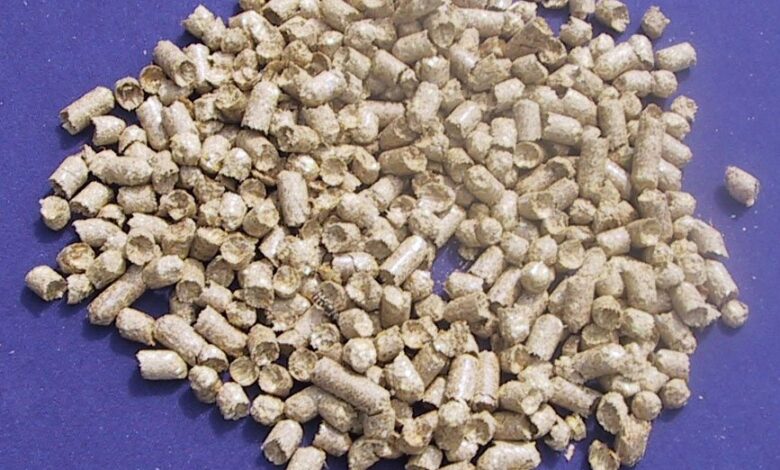Pelletierung: A Comprehensive Guide to Pelletizing Processes

Pelletierung, also known as pelletizing, is a process that involves converting a variety of materials into pellets for various applications. This technique is widely used across several industries, from agriculture to energy production, due to its effectiveness in improving material handling, optimizing space, and enhancing energy efficiency. In this article, we will explore the fundamentals of Pelletierung, its benefits, and how it is applied in different industries.
What is Pelletierung?
Pelletierung refers to the process of converting raw materials into pellets using a combination of mechanical pressure, heat, and sometimes moisture. The result is a compact, uniform-sized pellet that is easier to handle, transport, and store compared to the original material. Common raw materials used in Pelletierung include biomass, animal feed, minerals, and plastics.
The pelletizing process typically involves three key stages: conditioning, pelletizing, and cooling. During conditioning, the raw materials are prepared by adding moisture and heat to enhance their binding properties. In the pelletizing phase, the conditioned material is forced through a die under high pressure, shaping it into pellets. Finally, the pellets are cooled to harden and prevent them from breaking during handling.
The Pelletizing Process: A Step-by-Step Overview
Material Preparation
The first stage of Pelletierung involves preparing the raw material. This may include drying, grinding, or mixing to achieve the desired consistency. For biomass pellets, for example, materials like wood chips, sawdust, or straw are ground to a specific size to ensure uniformity during pelletizing. Moisture content is also carefully controlled, as it plays a significant role in pellet quality.
Conditioning and Mixing
Conditioning is a crucial step in Pelletierung that involves adding moisture, steam, or other liquids to the raw material. This step softens the material, making it more pliable and easier to form into pellets. The addition of moisture also activates the natural binding agents in the material, such as lignin in wood, which helps the pellets hold their shape.
In some cases, additional binders or additives may be introduced during conditioning to enhance the strength and durability of the pellets. For instance, when producing animal feed pellets, ingredients like vitamins, minerals, and proteins are mixed with the primary material to meet specific nutritional requirements.
Pelletizing
The actual pelletizing process is where the magic happens. The conditioned raw material is fed into a pellet mill, where it is forced through a die using high pressure. The die contains small holes through which the material is extruded, forming uniform cylindrical pellets. The size of the pellets can be adjusted based on the die’s design, which can vary in diameter and length depending on the end-use requirements.
During this phase, the material undergoes a transformation. Heat generated by friction during the compression process causes the natural binders in the material to activate, helping the pellets maintain their shape once they exit the die.
Cooling and Hardening
After the pellets are formed, they are hot and soft. Cooling is essential to prevent the pellets from breaking and ensure their durability. The cooling phase involves gradually lowering the temperature of the pellets to ambient levels, which solidifies their structure.
Cooling systems often use air or water, and the temperature must be controlled to avoid cracking or warping. Once the pellets are fully cooled, they are ready for storage, transportation, or further processing.
Benefits of Pelletierung
Pelletierung offers several significant advantages across a range of industries:
- Improved Storage and Transport: Pellets are compact, uniform, and easier to handle compared to raw materials. This enhances storage efficiency and reduces the cost of transport.
- Energy Efficiency: Pelletized materials are often more energy-efficient, especially in the case of biomass pellets used for heating and electricity generation. The consistent size and density of pellets make them burn more efficiently than loose biomass.
- Environmental Benefits: Pelletizing biomass, such as wood waste or agricultural residues, promotes sustainability by converting waste products into valuable resources. Additionally, biomass pellets are considered carbon-neutral, as the carbon dioxide released during combustion is offset by the carbon absorbed by the plants during growth.
- Enhanced Quality Control: The pelletizing process allows for greater control over the quality and consistency of the final product. In industries like animal feed production, Pelletierung ensures that each pellet contains the necessary nutrients and additives in the correct proportions.
- Waste Reduction: By utilizing agricultural residues, forestry by-products, or industrial waste, Pelletierung helps reduce the volume of waste that would otherwise be discarded or burned in an uncontrolled manner.
Applications of Pelletierung in Different Industries
Biomass Energy
One of the most prominent uses of Pelletierung is in the production of biomass pellets for energy generation. Biomass pellets are used as a renewable energy source in power plants and industrial boilers. The pellets offer several benefits over traditional fuels such as coal or oil, including lower carbon emissions, higher energy efficiency, and reduced environmental impact.
Animal Feed Production
Pelletierung is widely used in the production of animal feed. Animal feed pellets are made from grains, soybeans, and other raw materials mixed with nutrients and vitamins. The uniform size and consistency of the pellets help ensure that animals receive the correct nutrition in every bite, improving growth rates and overall health.
Agriculture
In agriculture, Pelletierung is used to produce fertilizer pellets. These pellets are often made from organic materials like manure, compost, or plant residues. Fertilizer pellets provide a controlled release of nutrients, reducing the risk of over-fertilization and ensuring that plants receive the nutrients they need over a longer period.
Pharmaceuticals and Chemicals
The pelletizing process is also used in the pharmaceutical industry to create controlled-release medications. The consistency and controlled release of pellets allow for the precise delivery of active ingredients over an extended period. Pelletized chemicals are easier to handle and store compared to powders or liquids.
Plastic and Rubber Industries
Pelletierung is used in the production of plastic and rubber pellets, which are then used in the manufacturing of products like containers, tires, and other items. Pelletizing these materials improves consistency, ease of handling, and processing efficiency.
Challenges and Considerations in Pelletierung
While Pelletierung offers numerous benefits, there are some challenges associated with the process:
- Energy Consumption: The pelletizing process, especially when producing biomass pellets, can be energy-intensive. It requires significant amounts of energy to grind, heat, and press the raw materials. Advances in energy-efficient equipment and renewable energy sources are helping mitigate this issue.
- Raw Material Variability: Variability in the raw materials used can affect the quality of the pellets. Differences in moisture content, particle size, and the presence of contaminants can all influence the final product’s consistency and durability.
- Equipment Costs: Pelletizing machines and associated infrastructure can be costly, which may pose a challenge for small-scale operations. However, as demand for pellets increases, technological advancements and economies of scale are helping to lower costs.
Conclusion
Pelletierung is a vital process that brings numerous benefits to industries ranging from energy to agriculture. It improves the handling, storage, and transport of materials, increases energy efficiency, and promotes sustainability. Despite some challenges, the versatility and advantages of pelletizing make it an essential technology in today’s industrial landscape.



